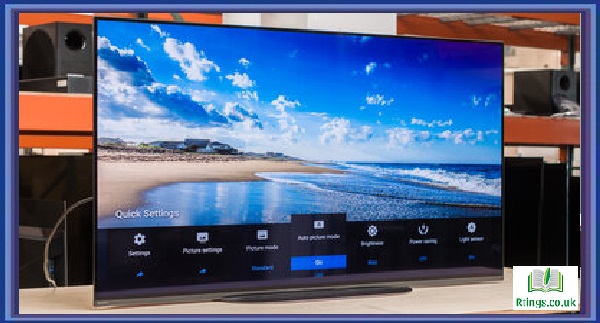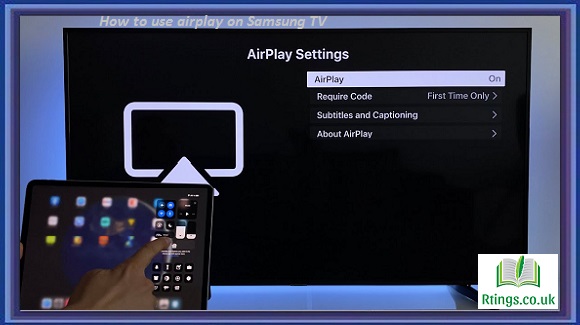OLED (Organic Light Emitting Diode) TVs have become increasingly popular over the years because of their superior picture quality. One key factor determining the quality of the picture on a TV is the contrast ratio. The contrast ratio is the difference between the darkest and brightest areas of an image displayed on a TV. A high contrast ratio indicates that the TV can produce deep blacks and bright whites, resulting in a more vivid and lifelike image.
When shopping for an OLED TV, there are several factors to consider that will affect the contrast ratio of the TV. These factors include the number of pixels, the brightness of the TV, the color gamut, and the panel technology used.
Number of Pixels
The number of pixels on a TV affects the clarity and sharpness of the image. A higher number of pixels means more dots on the screen, resulting in a sharper image. OLED TVs come in different resolutions, including Full HD (1920 x 1080), 4K (3840 x 2160), and 8K (7680 x 4320). Generally, the higher the resolution, the better the contrast ratio, but this is only sometimes the case.
Brightness
The brightness of a TV affects the overall quality of the image. A brighter TV can produce more vivid and lifelike colors but also affect the contrast ratio. OLED TVs have an advantage over other types of TVs when it comes to brightness because they can produce bright whites and deep blacks simultaneously, resulting in a high contrast ratio.
Color Gamut
The color gamut is the range of colors that a TV can produce. A wider color gamut means the TV can produce more colors, producing a more realistic image. OLED TVs have a wider color gamut than other types of TVs, resulting in a higher contrast ratio.
Panel Technology
The panel technology used in a TV affects the contrast ratio. Two main types of panel technology are used in TVs: IPS (In-Plane Switching) and VA (Vertical Alignment). IPS panels have wider viewing angles but a lower contrast ratio. VA panels have a higher contrast ratio but narrower viewing angles. OLED TVs use different panel technology from IPS or VA panels.
When comparing contrast ratios on different budget OLED TVs, it is important to consider these factors. However, it is also important to remember that a higher contrast ratio does not always mean a better picture. Other factors, such as color accuracy, motion handling, and input lag, can also affect the overall quality of the image.
Here are some steps to compare contrast ratios on different budget OLED TVs.
Step 1: Research
Before making a purchase, it is important to research the different OLED TVs that are available in your budget range. You can read reviews and compare specifications to get an idea of each TV’s contrast ratio and other features.
Step 2: Check the Resolution
Check the resolution of each TV you are considering. Generally, a higher resolution means a better contrast ratio, but this is only sometimes the case. For example, a 4K TV may have a higher contrast ratio than a 1080p TV, but a 1080p OLED TV may have a higher contrast ratio than a 4K LED TV.
Step 3: Check the Brightness
Check the brightness of each TV. A brighter TV can produce more vivid and lifelike colors but also affect the contrast ratio. Look for TVs with a high peak brightness to ensure that the TV can produce bright whites and deep blacks simultaneously.
Step 4: Check the Color Gamut
Check the color gamut of each TV. OLED TVs have a wider color gamut than other types of TVs, resulting in a higher contrast ratio. Look for TVs with a wide color gamut that can produce a range of colors.
Step 5: Check the Panel Technology
Check the panel technology used in each TV. OLED TVs use a different type of panel technology than IPS or VA panels. However, there are still variations in the panel technology used by different manufacturers that can affect the contrast ratio. Look for TVs with a high contrast ratio, and consider the viewing angles and other factors that can affect the picture quality.
Step 6: Consider Other Factors
In addition to the contrast ratio, consider other factors that can affect the picture’s overall quality. Color accuracy, motion handling, and input lag affect picture quality. Look for TVs with good color accuracy, fast refresh rates, and low input lag to ensure that the TV can handle fast-paced action and gaming.
Step 7: Compare Prices
Once you have narrowed down your choices based on the contrast ratio and other factors, compare prices to find the best deal. OLED TVs are generally more expensive than other TVs, but budget options are available. Look for sales and promotions to save money on your purchase.
Conclusion
When comparing contrast ratios on different budget OLED TVs, it is important to consider factors such as resolution, brightness, color gamut, and panel technology. However, it is also important to consider other factors that can affect the picture’s overall quality, such as color accuracy, motion handling, and input lag. By researching and comparing prices, you can find the best OLED TV for your budget and enjoy a superior viewing experience with a high contrast ratio and lifelike colors.
Frequently Asked Questions (FAQs)
Are OLED TVs worth the price?
OLED TVs are generally more expensive than other types of TVs, but many people believe that they are worth the price because of their superior picture quality. OLED TVs can produce deep blacks and bright whites simultaneously, resulting in a high contrast ratio and more lifelike colors. However, whether or not an OLED TV is worth the price will depend on your budget and personal preferences. It’s important to do your research and compare different models to find the best option for your needs.
What is the difference between OLED and LED TVs?
OLED and LED TVs use different technologies to produce images. OLED TVs use organic compounds that emit light when electricity is applied, resulting in deep blacks and bright whites. LED TVs use a backlight behind an LCD panel to produce images, which can result in less accurate colors and contrast. OLED TVs tend to have better picture quality overall, but they are typically more expensive.
Can the panel technology used in an OLED TV affect the contrast ratio?
Yes, the panel technology used in an OLED TV can affect the contrast ratio. While OLED TVs use a different type of panel technology than IPS or VA panels, there are still variations in the panel technology used by different manufacturers that can affect the contrast ratio. Look for OLED TVs with a high contrast ratio and consider other factors such as viewing angles and motion handling.
Does resolution affect the contrast ratio of an OLED TV?
Resolution can affect the contrast ratio of an OLED TV to some extent. Generally, a higher resolution means a better contrast ratio, but this is not always the case. A 1080p OLED TV may have a higher contrast ratio than a 4K LED TV, for example. It’s important to consider other factors, such as brightness and color gamut, when comparing contrast ratios.
What is a good contrast ratio for an OLED TV?
A good contrast ratio for an OLED TV is typically 100,000:1 or higher. However, keep in mind that the contrast ratio is just one factor to consider when comparing TVs. Other factors, such as color accuracy, motion handling, and input lag, can also affect the overall picture quality.







